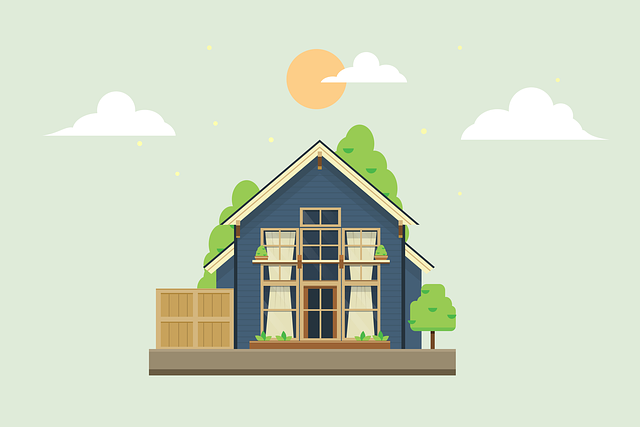To enhance your home's energy efficiency and reduce utility costs, prioritize improving window and door performance, as they are major sources of heat transfer. Conduct detailed assessments with both visual inspections and advanced tools like infrared cameras to detect air leaks. Regular maintenance is key, including checking and replacing weather stripping, caulking, and seals to prevent drafts and energy loss. Upgrade to high-quality, multi-pane windows with low-emissivity coatings and consider argon gas fills for superior insulation. For doors, ensure proper sealing with sweeps, thresholds, and weatherstripping. Explore cost-effective retrofits such as window films or energy-efficient materials for doors to reflect infrared light. Implementing these home repair and maintenance best practices will lead to a more comfortable living environment year-round and can result in significant energy savings. Regular upkeep, including cleaning tracks and hinges, is essential for the longevity and peak performance of your windows and doors.
Energy efficiency in homes is paramount for comfort and cost savings. This article delves into the significance of window and door repairs in enhancing a home’s energy efficiency, offering practical solutions through detailed sections on assessing energy loss points and implementing effective improvements within the realm of Home Repair And Maintenance. By understanding how to identify inefficiencies and applying targeted solutions, homeowners can significantly reduce their energy bills and create a more comfortable living environment.
- Assessing Energy Loss Through Windows and Doors: Identifying Inefficiencies for Home Repair And Maintenance
- Effective Solutions for Enhancing Window and Door Energy Efficiency in Home Repair And Maintenance
Assessing Energy Loss Through Windows and Doors: Identifying Inefficiencies for Home Repair And Maintenance

To enhance a home’s energy efficiency, it’s crucial to assess and address energy loss through windows and doors. Homeowners can begin by conducting simple visual inspections or more precise tests to identify inefficiencies. Adequate sealing around frames is essential for preventing drafts, as unsealed gaps can significantly contribute to heat transfer. Inspecting weather stripping and caulking for wear and tear is a critical step. Additionally, checking the condition of window glazing or pane seals can reveal potential leak points. Utilizing tools like infrared cameras can detect temperature differentials that indicate air leakage paths. This process not only helps in pinpointing exact locations where energy is escaping but also guides targeted home repair and maintenance efforts, leading to improved thermal performance and lower utility bills.
Furthermore, the performance of windows and doors can degrade over time due to factors such as material fatigue or condensation between panes, which impairs insulation. Homeowners should be aware that upgrading to double or triple-pane windows with low-emissivity coatings can drastically reduce heat loss during cold months and heat gain during warm ones. Regular maintenance, including tightening hardware, lubricating moving parts, and cleaning window surfaces for optimal sunlight reception, contributes to the longevity of these fixtures. By staying vigilant and proactive with home repair and maintenance, homeowners can significantly improve their living space’s energy efficiency and comfort levels throughout the year.
Effective Solutions for Enhancing Window and Door Energy Efficiency in Home Repair And Maintenance

To improve a home’s energy efficiency and reduce utility bills, focusing on window and door repairs is a wise choice. Homeowners can significantly enhance thermal performance by addressing common issues such as drafts, leaks, and inadequate insulation around these openings. Simple yet effective solutions include installing weatherstripping and caulking to seal gaps where air can escape or infiltrate. This not only prevents energy loss during cold months but also keeps heat out during warmer seasons. Additionally, upgrading to double-pane or triple-pane windows can be a long-term investment that pays off through improved comfort and energy savings. These advanced window designs often feature argon gas fills and low-emissivity coatings, which further minimize heat transfer and solar radiation.
For doors, similar attention should be given to ensure they maintain an airtight seal. Replacing or adjusting door sweeps, threshold seals, and door slabs can drastically reduce air infiltration. Homeowners should also consider upgrading to energy-efficient door models that have better insulation properties. Another cost-effective approach is the installation of window films or energy-efficient door materials that reflect infrared light. These materials can be retrofitted into existing structures, providing an additional layer of protection against energy loss. Regular maintenance, such as cleaning window tracks and door hinges to ensure smooth operation, also contributes to the overall efficiency of these points of entry and exit. By implementing these home repair and maintenance strategies, homeowners can effectively improve their home’s energy efficiency, leading to a more comfortable living environment and potential savings on energy costs.
Homeowners looking to improve their living spaces and reduce energy costs can significantly benefit from addressing window and door inefficiencies. By assessing energy loss through these points of exit, as detailed in “Assessing Energy Loss Through Windows and Doors,” homeowners can pinpoint where improvements are most needed. The subsequent section, “Effective Solutions for Enhancing Window and Door Energy Efficiency in Home Repair And Maintenance,” outlines practical, cost-effective measures to bolster a home’s thermal performance. Implementing these solutions not only enhances comfort within the home but also contributes to environmental sustainability by minimizing energy consumption. In conclusion, investing time and resources into proper window and door maintenance is a key step in achieving better energy efficiency, an essential aspect of comprehensive home repair and maintenance strategies.
